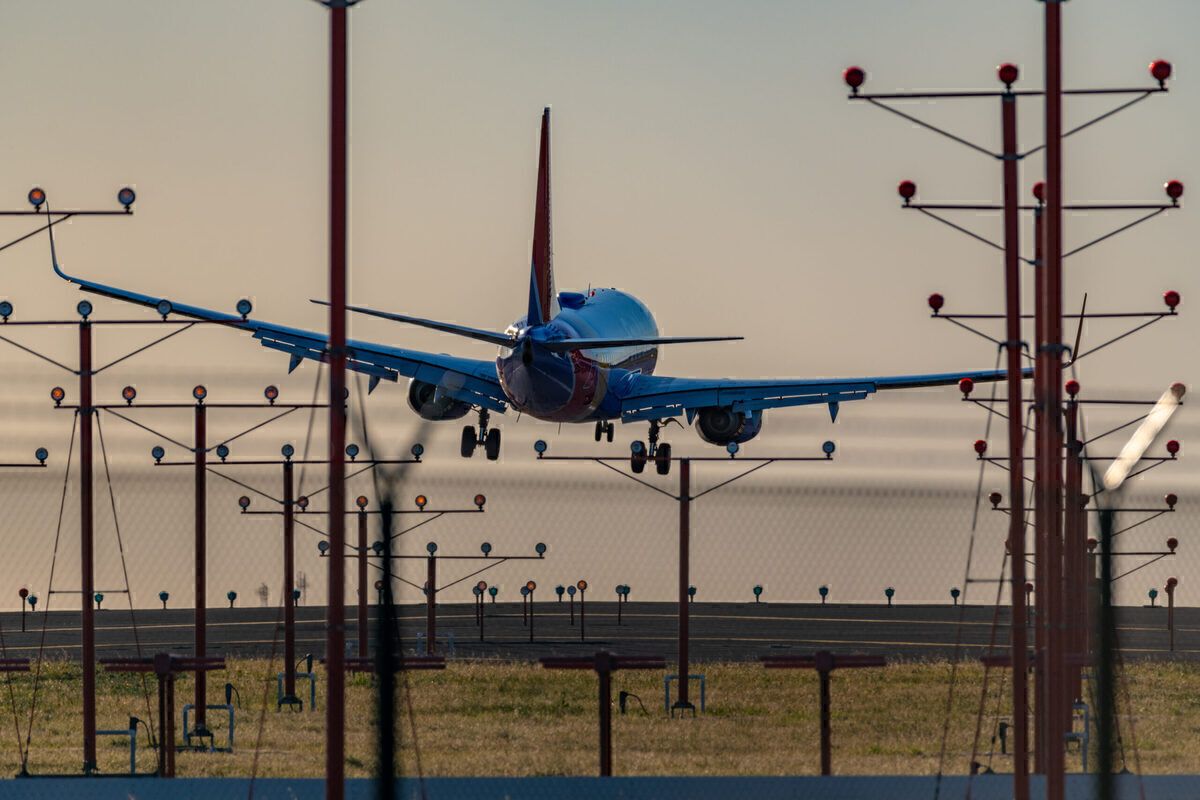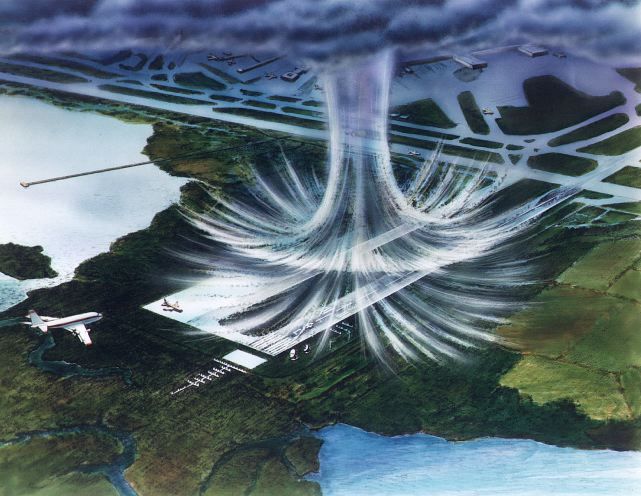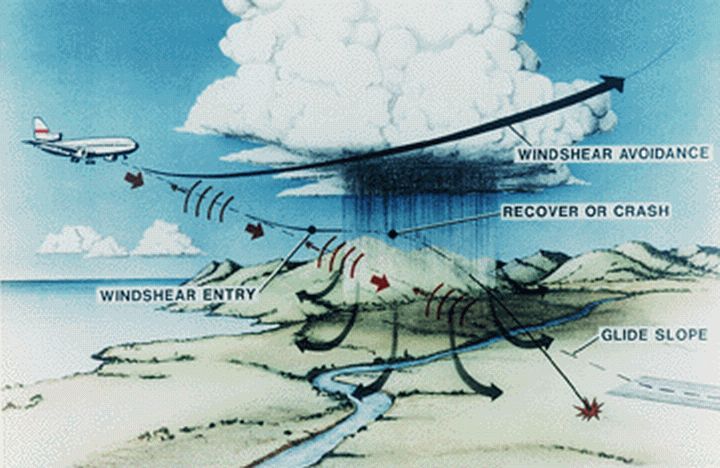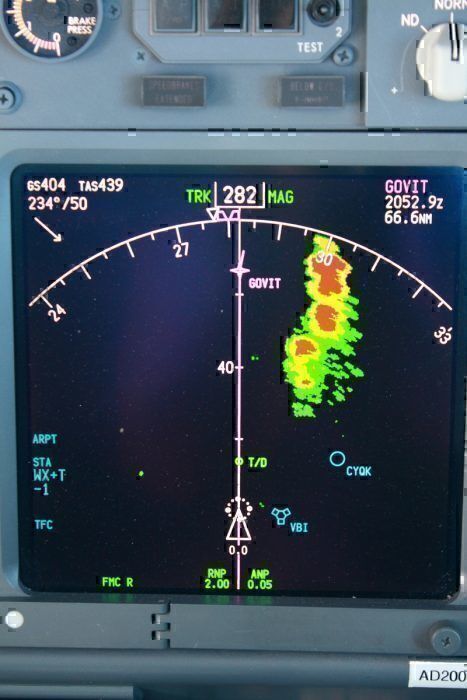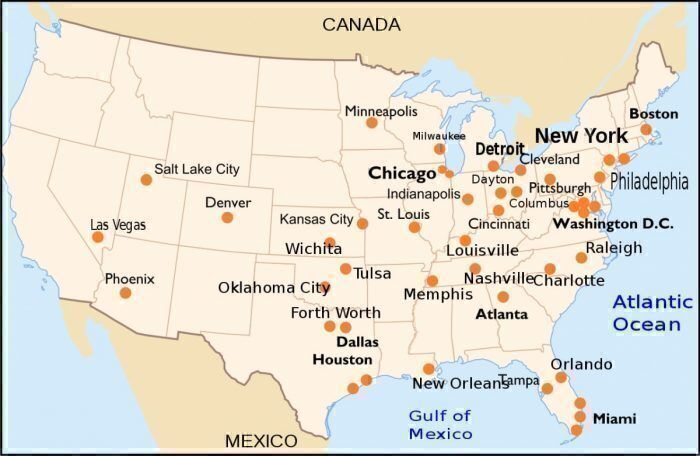Weather can be a hazard to aircraft in many ways. Windshear is one of the most dangerous conditions, where strong localized winds occur close to the ground. This was much more dangerous in the past than it is now, as modern aircraft have a stronger ability to avoid dangerous conditions.
What is windshear?
Windshear refers to the situation where the wind changes direction or speed suddenly, over a short distance. It can be vertical or horizontal, affecting an aircraft either as it takes off or descends, or its horizontal flight path.
Windshear is different from the prevailing wind in that it happens over a short distance. It is often experienced near microbursts or downbursts, produced as part of a thunderstorm or weather front.
A downburst is a wind system that originates from a point source and blows downwards until it meets the ground and then spreads outwards. A microburst is the term used when this is experienced over a small area.
How can windshear affect aircraft?
Strong winds themselves, of course, are not necessarily a major problem for aircraft. The danger with windshear is the sudden change in the wind and the resulting effect on the aircraft's lift.
Windshear can occur at high or low altitudes. At high altitudes, vertical windshear can cause changes to airspeed and rate of descent. This is often felt as turbulence.
But it is at low elevation, close to the ground, that windshear is most dangerous. Downbursts close to an airport can affect aircraft during take-off and landing. As the aircraft approaches the downdraft, the horizontal windshear, as a headwind, will increase airspeed. And again, as the aircraft leaves the downdraft, the wind becomes a tailwind. This reduces the lift generated by the wings.
Some accidents have been caused where pilots reacted to the initially increased airspeed by reducing power. When the wind switches to a tailwind, the aircraft can end up with low power and losing altitude close to the ground.
According to records, windshear caused 26 major aircraft accidents in the US between 1964 and 1985. One of the most notable, and one which led to changes in aircraft safety systems, was a Delta Air Lines crash in 1985. Windshear caused the aircraft to lose lift and crash short of the runway, killing 137 passengers.
Preventing problems with windshear – crew training and onboard systems
The ability to detect and avoid windshear has increased greatly since the 1980s. Flight crews are trained to recognize windshear and to avoid it where they can. Aircraft will often delay their approach to an airport if thunderstorms threaten the area.
Advances in radar technology have aided the advanced detection of windshear. Onboard aircraft radar is now able to detect windshear and changes in wind speed close to the ground (by detecting the frequency shift of the microwave pulses caused by the microburst). In comparison, earlier radar systems mainly worked by detecting moisture, which is not a good indicator of windshear.
Potential windshear conditions will be highlighted on the onboard radar, and will also produce an audible alert for severe conditions. The FAA has mandated this for all commercial jet aircraft since 1993.
Stay informed: Sign up for our daily aviation news digest.
Radar on the ground is also now much better at detecting windshear. Doppler weather radar systems are able to detect precipitation, winds, and windshear and are used at major airports worldwide. The most advanced of these, known as Terminal Doppler Weather Radar (TDWR), provide enhanced resolution and range. These systems are in use at 45 key airports in the US and in several other countries.
With these advances in detection, accidents caused by windshear are much less common nowadays. Accidents in recent years include a Bhoja Air flight in Pakistan, which crashed in windshear conditions on the approach to Islamabad airport, killing all passengers and crew. And an Aeroflot SJ100 crashed in Moscow in mid-2019 after flying through a thunderstorm despite a windshear warning from onboard radar, killing 41 people.
What are your thoughts about windshear? Let us know what you think in the comment section.

